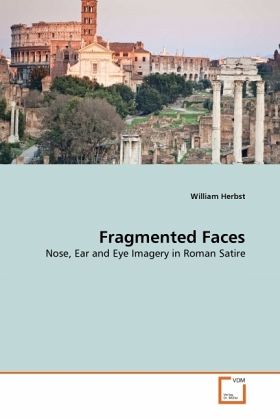
Fragmented Faces
Nose, Ear and Eye Imagery in Roman Satire
Versandkostenfrei!
Versandfertig in 6-10 Tagen
52,99 €
inkl. MwSt.

PAYBACK Punkte
26 °P sammeln!
The extant writings of the four major Roman verse satirists present a complex network of images of the body in which the sensory organs of the face play a prominent role. The satirists exhibit a fascination with noses, ears and eyes because these organs function as both the focal point of an observer's gaze and as the body's primary sensory interface with the environment. Reading these anatomical images with insights gleaned from a critically heterodox study of contemporary theory and a methodology modeled on traditional philological inquiry reveals the means by which the satirists weave the b...
The extant writings of the four major Roman verse satirists present a complex network of images of the body in which the sensory organs of the face play a prominent role. The satirists exhibit a fascination with noses, ears and eyes because these organs function as both the focal point of an observer's gaze and as the body's primary sensory interface with the environment. Reading these anatomical images with insights gleaned from a critically heterodox study of contemporary theory and a methodology modeled on traditional philological inquiry reveals the means by which the satirists weave the body into their presentation of larger rhetorical goals. The satirists often exploit the potential of each of these organs to serve as an image of vulnerability or aggression. By exploring the tension between the organs' active and passive roles, the poets reflect the paradoxical character of their chosen genre, a mode of expression that perpetually oscillates between paranoid anxiety and confrontational arrogance in tone. Through their depiction of the sense organs of the face and head in their verse, the poets ultimately offer an oblique glimpse into the nature of the satiric voice itself.












